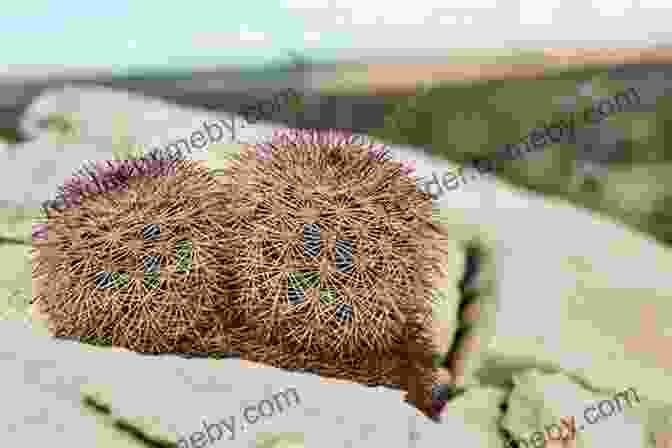Tour to Mexican Habitats of Echinocereus Pectinatus

5 out of 5
| Language | : | English |
| File size | : | 37928 KB |
| Print length | : | 83 pages |
Echinocereus pectinatus, commonly known as the comb hedgehog cactus, is an iconic cactus species found in the diverse landscapes of Mexico. Its unique habitats, ranging from arid deserts to lush coastal plains, showcase the extraordinary biodiversity of this country.
This article takes you on a photographic journey to the key habitats of Echinocereus pectinatus in Mexico, highlighting their ecological significance, conservation challenges, and the mesmerizing beauty of this resilient cactus.
Desert Habitat
Echinocereus pectinatus thrives in the harsh conditions of the Mexican deserts. These arid regions are characterized by extreme temperatures, limited water availability, and sparse vegetation.
In the Chihuahua Desert, Echinocereus pectinatus often forms dense clusters in rocky canyons. These clusters provide shelter from the sun and wind, while their shallow root systems allow them to access scarce water. The cactus's thick cuticle and spines help it retain moisture and protect it from intense solar radiation.

Mountain Habitat
Ascending into the mountains, Echinocereus pectinatus encounters a more temperate climate with higher rainfall and cooler temperatures. In the Sierra Madre Oriental, the cactus grows on steep slopes and rocky outcrops, often mingling with other cacti and succulents.
The mountain habitats provide the cactus with deeper soils and better drainage, allowing it to establish more extensive root systems. The increased elevation also offers protection from the extreme heat and dryness of the lower desert regions.

Grassland Habitat
In the northern Mexican state of Coahuila, Echinocereus pectinatus ventures into grasslands, where it grows alongside diverse grasses, wildflowers, and shrubs. These grasslands receive more rainfall than the deserts, but droughts can still occur.
The cactus's shorter stature and deep taproot system allow it to survive in the grassland's fluctuating moisture conditions. In these habitats, Echinocereus pectinatus often forms scattered colonies, adding a touch of desert beauty to the grassland ecosystem.

Coastal Plain Habitat
Nearing the Gulf of Mexico, Echinocereus pectinatus reaches the coastal plains of Tamaulipas. These plains are characterized by a subtropical climate, with higher humidity and rainfall throughout the year.
In this habitat, the cactus grows in open scrublands and along the edges of marshes. Its proximity to the coast provides it with a more stable water supply and protection from extreme temperatures. The coastal populations of Echinocereus pectinatus display a slightly different morphology, adapting to the more humid conditions.

Conservation Status and Threats
Despite its widespread distribution, Echinocereus pectinatus faces various conservation challenges. Its habitats are threatened by deforestation, urbanization, and overgrazing, particularly in the desert and grassland regions.
Illegal collection for ornamental purposes also poses a significant threat to the species. Echinocereus pectinatus is slow-growing and takes many years to reach maturity, making it vulnerable to over-harvesting.
Conservation efforts are underway to protect the remaining populations of Echinocereus pectinatus. These include habitat restoration, ex situ conservation programs, and awareness campaigns.
Echinocereus pectinatus is a remarkable cactus species that has adapted to the diverse habitats of Mexico, from the arid deserts to the coastal plains. Its resilience showcases the extraordinary biodiversity of this country.
Understanding the unique ecosystems that support Echinocereus pectinatus is crucial for its conservation. By exploring its habitats, we gain insights into the challenges and opportunities for protecting this enigmatic cactus and ensuring its survival for future generations.
5 out of 5
| Language | : | English |
| File size | : | 37928 KB |
| Print length | : | 83 pages |
Do you want to contribute by writing guest posts on this blog?
Please contact us and send us a resume of previous articles that you have written.
 Book
Book Novel
Novel Page
Page Chapter
Chapter Text
Text Story
Story Genre
Genre Reader
Reader Library
Library Paperback
Paperback E-book
E-book Magazine
Magazine Newspaper
Newspaper Paragraph
Paragraph Sentence
Sentence Bookmark
Bookmark Shelf
Shelf Glossary
Glossary Bibliography
Bibliography Foreword
Foreword Preface
Preface Synopsis
Synopsis Annotation
Annotation Footnote
Footnote Manuscript
Manuscript Scroll
Scroll Codex
Codex Tome
Tome Bestseller
Bestseller Classics
Classics Library card
Library card Narrative
Narrative Biography
Biography Autobiography
Autobiography Memoir
Memoir Reference
Reference Encyclopedia
Encyclopedia Richard Miller Adi
Richard Miller Adi Maureen Connolly
Maureen Connolly Susan L Roth
Susan L Roth Sheila Rowbotham
Sheila Rowbotham Tim Flinders
Tim Flinders Marcus Richardson
Marcus Richardson Robert C Sickels
Robert C Sickels The Car Crash Detective
The Car Crash Detective Rumiko Takahashi
Rumiko Takahashi Walter Enders
Walter Enders Roy Macskimming
Roy Macskimming Tim Perse
Tim Perse Seth Stein
Seth Stein Orlando Wilson
Orlando Wilson Laurie Segall
Laurie Segall Rick Page
Rick Page Megan Shepherd
Megan Shepherd Varan Merten
Varan Merten Steven A Frowine
Steven A Frowine Laura Sebastian
Laura Sebastian
Light bulbAdvertise smarter! Our strategic ad space ensures maximum exposure. Reserve your spot today!

 Robert BrowningUnveiling the Secrets of Economics: A Journey with "The Undercover Economist,...
Robert BrowningUnveiling the Secrets of Economics: A Journey with "The Undercover Economist,... Junot DíazFollow ·18.9k
Junot DíazFollow ·18.9k Manuel ButlerFollow ·16.7k
Manuel ButlerFollow ·16.7k H.G. WellsFollow ·19.8k
H.G. WellsFollow ·19.8k Garrett PowellFollow ·9.1k
Garrett PowellFollow ·9.1k Italo CalvinoFollow ·14.8k
Italo CalvinoFollow ·14.8k Henry Wadsworth LongfellowFollow ·15.8k
Henry Wadsworth LongfellowFollow ·15.8k Jayson PowellFollow ·3.2k
Jayson PowellFollow ·3.2k Chuck MitchellFollow ·6.8k
Chuck MitchellFollow ·6.8k

 Wayne Carter
Wayne CarterThe Beginner's Guide to Making an Old Motor Run Forever
If you're like most...

 Deacon Bell
Deacon BellNepali Adventure: Kings and Elephant Drivers,...
In the heart of the...

 Carlos Drummond
Carlos DrummondThe Romantic Revolution: A Journey Through History and...
Unveiling the...

 Kazuo Ishiguro
Kazuo IshiguroUnlock Your Inner Innovator: Dive into the New Wave...
Embark on a Transformative Journey of...

 William Golding
William GoldingCrazy Horse: The Lakota Warrior's Life and Legacy
In the annals of Native...

 Hector Blair
Hector BlairMildred and Richard Loving: The Inspiring Story of...
Mildred and Richard Loving were an...
5 out of 5
| Language | : | English |
| File size | : | 37928 KB |
| Print length | : | 83 pages |










